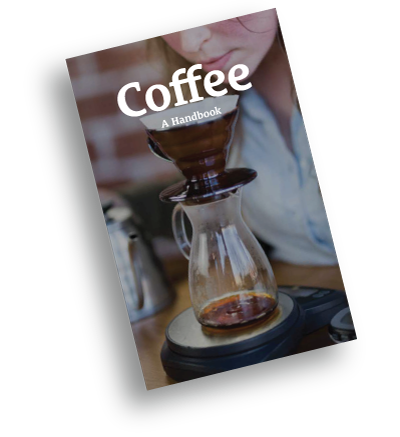Are you a dark roast fan (you dig heavy chocolate and toast)? Maybe you prefer your coffees colored light like caramel and bursting with citrus acidity? Or, do you lie somewhere in the middle, falling for a balanced brew that straddles the line of sweetness and piquancy?
Coffee's journey to your cup is a long one full of physical and chemical processes that ultimately result in the delicious flavor you've come to expect. Starting off as a sweet and spicy red (or yellow, pink, or orange) fruit in its country of origin, the coffee cherry is quickly stripped of its fruit by washing or by drying and friction. The resulting coffee bean (which is actually the seed) is generally light green in color and even smells slightly vegetal. Once green coffee beans are dumped into a coffee roaster and heat is applied, the magic kicks in.
There are hundreds of aromatic and organic compounds discovered so far in coffee, many times more than are found in wine. Through careful application of heat (380-450 degrees Fahrenheit) over time, roasters can coax specific compounds to the forefront to design the ideal coffee experience for your mouth.
The Coffee Roasting Process
In the first stage of roasting, coffee dries, losing its water content in the form of steam. At this stage, it smells vegetal, leading through the yellowing stage to the most exciting part: First Crack! This is when you might wonder if some corn kernels slipped into the roaster drum, as audible “pops” sound. First Crack is where many lighter-roasted coffees are dropped into the cooling tray of the roaster, maximizing organic acids and resulting in bright, articulate coffees.
Just before First Crack, caramelization of the natural sugars in the bean begins, a process which continues during the development stage. Through careful heat application during, roasters can balance the browning of sugars with the brightness of organic acids, creating a delicate, complex dance between caramel and fruit.
And then, along comes Second Crack. At this point in the roasting process, the coffee's cellular structure is breaking down and the roaster begins to impart smokiness to the bean. Coffee dropped at this stage can be magical, with dark chocolate and fruits balanced with a bitterness ranging from cocoa to carbon. Beyond this point is the historic "French Roast" development, visually identified by the sheen of coffee oil on the outside of the bean. Past this point the coffee rapidly becomes carbonized and often nasty. You won't see any coffees past this stage on Crema.co!
Light vs. Dark Roast
Light Roast
Light roasting lets the terroir (taste characteristics influenced by soil, water, etc.) of the origin country shine through. Coffees tend to have bright acidity and a light caramel color.
Medium Roast
Medium roasting balances coffee’s natural acidity and vibrancy with its sweetness and caramelization of sugars. Coffees are a milk chocolate color.
Dark Roast
The classic roasting style, which brings out woody, chocolate, and heavy body in coffee and produces a shiny dark brown coffee bean. Stands up beautifully to milk and sugar.
